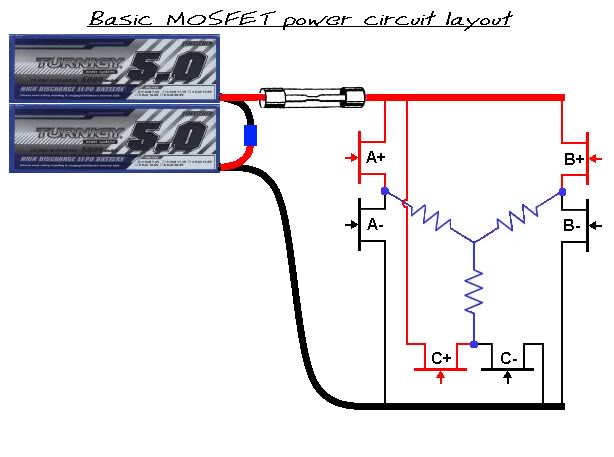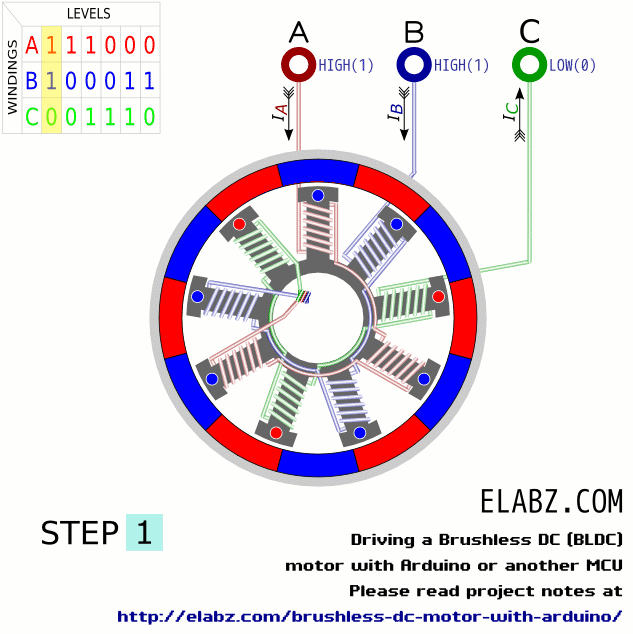Can someone (if they want to and can) give me some information about when one phase is high, how it gets high (one step or is it going by 0,1v per step or anything). And how the phases relate to each other?
The hall sensors used on the motors are
not linear like a throttle hall sensor, so they are either in a fully open state or in fully closed state.
Check out
this video to see the difference.
The three motor phase wires are all joined together at one end to form a star
(Wye or "Y") configuration as shown here:

The remaining ends of the three phase wires are intermittently switched
(independently of each other) using
MOSFETs to select either battery positive or battery negative, according to the open or closed state of the hall sensor associated with each particular phase wire.
In order to adjust the power and speed of the motor, the
MOSFETs are controlled by a throttle related variable pulsed signal
(PWM), which basically regulates the effective voltage being supplied to the windings.

Check out the animation
half way down the page on this website to see how the phase switching sequence operates on a typical three phase motor.
Alan EDIT: Animation added because the interactive version on
elabz.com is no longer working
